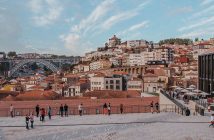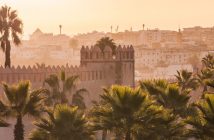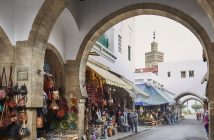In the second part of his feature on the Cayman Islands, Nick Price goes beyond the beaches and resorts, and finds the island’s true spirit not in its wealth but in its wilderness…
Adjacent to Vida lies Barkers Bay National Park, a protected conservation area where you can ride horses into the sea. I was initially rather sceptical; my British reserve perhaps scoffing at something that seemed undeniably touristy. But mindful that I’d come to the island to be, well, more mindful, I decided to embrace it.
The coastline here differs dramatically from the famous Seven Mile Beach: a narrow strip of sand with vegetation growing almost to the water’s edge. A few yards back, in welcome shade, seven horses stood tethered to trees with names like Geronimo, Clover, and Misty. The one they assigned to me was called Mischief; I eyed the animal wondering what might be about to follow, but perhaps because I’d mentioned having ridden before they thought that all would be well.

So, there I was, riding down an almost deserted beach, feeling not the slightest bit self-conscious, chatting with my amiable guide Shea. Looking out over the bay, I could see boats in the middle distance where people swam with manta rays in water barely ten feet deep, despite being several miles from shore. The beach led us through vegetation and trees preserved as part of the island’s indigenous flora. While it seems an idyllic paradise now, the thickness of the bush suggested what an extraordinarily challenging environment it must have been for early settlers.
The Caymans only began proper development around the 1960s when the population began to expand; before that the early inhabitants largely washed up on these shores. Some through shipwrecks, others fleeing the American War of Independence, some brought by slavery, and finally there were pirates, lying in wait for Spanish galleons to pass within striking distance.
As Mischief and I made our way along the sand, I noticed debris littering the beach: plastic bottles, a car bumper, packaging of various descriptions. Shea explained that despite constant cleanup efforts, plastic continually washes in from neighbouring islands; a sobering reminder of our interconnected world.

After twenty minutes or so, we removed the saddles. For the first time in my life, I rode a horse bareback – something I’d always assumed was inadvisable, uncomfortable, and likely to result in an undignified tumble. I wondered if this might be Mischief’s moment to assert herself, though apart from occasionally attempting to wander off or nip at other horses, she’d been perfectly amenable. In fact, she seemed happiest in the water as we waded out for a swim before cantering back through the surf – an experience I suspect I’ll never forget.
Later that day, I found myself at the George Town Yacht Club, home to a fabulous restaurant where I sampled some of the finest fish I’ve ever tasted, followed by local rum that simply had to be experienced to be believed. Perhaps unsurprisingly, it was at the Yacht Club that I finally witnessed some of the fabulous wealth for which the Caymans are renowned; though like so much else here, it wasn’t remotely ostentatious, sitting serenely alongside the island’s more modest charms.

What struck me throughout my stay was how the island’s culinary heritage reflects its complex history: a fascinating blend of Caribbean traditions, influences from early settlers, and the bounty of surrounding waters. The cuisine builds on foundational ingredients like coconut, plantain, cassava, yams, and rice and peas, enriched by Jamaican spices including jerk seasoning and curry.
The coconut shrimp here surpasses any version you might have tasted elsewhere, and everywhere you turn, the cooking celebrates the marriage of land and sea that defines island life. Its cuisine born of necessity but elevated by the natural abundance that surrounds these shores, creating flavours that are simultaneously familiar and utterly unique to this corner of the Caribbean.

From the Yacht Club, I took a kayak into the mangrove forests that once surrounded the entire island but now survive only in protected pockets. Dylan explained how mangroves provide more effective storm defence than any man-made structure, prompting an active programme to regrow them. They advance at roughly a foot per year, so restoration will take considerable time, but as I navigated among them, I began to understand why pirates once chose these labyrinthine waterways as their hiding places.
The conventional paddle becomes almost useless here; instead, you stow your oar and pull yourself hand over hand through a dense forest of arching roots, twisted branches, and curtains of leaves that create an utterly alien landscape. It’s like navigating through some primordial underwater cathedral, where shafts of filtered sunlight pierce the green canopy above while your fingers grasp at the smooth, salt-worn wood of ancient root systems. In this strange, enclosed world, I gained a profound sense of what existed here before settlement; and could easily imagine how effectively these natural mazes would have concealed the pirate ships that lay in wait for passing Spanish galleons on their way back to Europe.

At one point, Dylan drew my attention to what appeared to be small, round clumps of vegetation on the seabed. He explained that local jellyfish lie on the bottom with tentacles facing upward, waiting to capture small fish and other aquatic life. He promptly leaned over his kayak, gathered one up, and deposited it in his petri dish before handing it to me. I’d never imagined I would stroke a jellyfish, yet there I was, sitting in a kayak in a mangrove forest in what had become a torrential downpour, doing precisely that. If I had come here for a retreat and to experience mindfulness, I believe it is fair to say that in that moment I experienced genuine happiness.
And then, all of a sudden, a week had passed and I was on my way back to the airport to return home. It was perhaps serendipitous that my welcome to the island was echoed at my farewell. As we came off the dual carriageway, the driver stopped the car in the middle of the road, and then gently pulled past a small procession of chickens ambling their way across the tarmac with that same unhurried confidence I’d witnessed upon arrival.

Much like New Forest ponies, the wild chickens of Cayman are protected by law, so they wander where they please, when they please on their own Cayman Time. As I watched them disappear into the roadside vegetation, I smiled at how perfectly they embodied the island’s unhurried spirit.
As I mounted the steps to the plane, I reflected on the fact that this was a place that had surprised me in every way: revealing itself simultaneously as a wild and alien landscape teeming with life, perfectly balanced by a relaxed culture completely at peace with itself. I made a mental note to return.
British Airways flies from London Heathrow to Grand Cayman, via Miami. Prices off-peak start at £465. For more information, visit www.ba.com. Nick stayed at Hotel Indigo on Grand Cayman. For more information, please visit www.grandcayman.hotelindigo.com.
For more information about the Cayman Islands, and to start planning your trip, please visit the official tourism website at www.visitcaymanislands.com.




